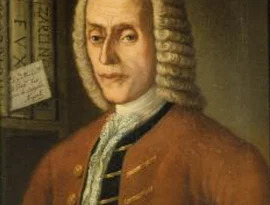
Francesco Provenzale
Born: 1624Died: 1704
Education: studied at the Conservatorio della Pietà dei Turchini in Naples
Career: founder of the Neapolitan school of opera
Before the year 1658, there is virtually no record of Francesco Provenzale's existence, although it's thought that he studied at the Conservatorio della Pietà dei Turchini. The year of his entry into history is 1654, the year his opera Theseo was performed in Naples. In his life, he mainly focused his energies on teaching, but he has a place in history as the first Neapolitan composer to embrace opera. Before Theseo, he seems to have composed at least two other operas. That same year, an opera called Il Ciro, no doubt by Provenzale, was performed in Venice at the Teatro di SS Giovaninni e Paolo. What was remarkable about the opera was that part of the music was by Pietro Cavalli; no other collaborative opera is known of in Venice before this date and Provenzale's Xerse and Artemisia may both have been arrangements of original works by Cavalli. Between composing opera and teaching, Provenzale managed to live a comfortable life. In 1660, he was married to Chiara Basile and by spring 1663, he became maestro of the Conservatorio di S Maria di Loreto, where he'd been working for at least two years. From this point on, until age began to take a toll, his life was a fairly enviable success story. His works were frequently performed in Naples. As his reputation grew, commissions began to pour in and his body of students grew. And although he served as maestro in numerous institutions, the top position of chief maestro at any of these eluded him. Late in life, when removed from some of his posts due to his age, he became deputy to Alessandro Scarlatti. In 1704, he was at last made chief maestro at the royal chapel, but it was only days before his death. The post was inherited by Gaetano Veneziano, his star student. Provenzale's surviving works, only a fraction of what he composed, are the operas Lo schiava di sua moglie and La Stellidaura vendicante, the sacred melodrama La colomba ferita (considered his best piece), and numerous sacred works. Works: Opera: II Ciro (Naples, 1653); II Theseo, o vero L’incostanza trionfante (Naples, 1658); II Schiavo di sua moglie (Naples, 1671); La colomba ferita, sacred opera (Naples, Sept. 18, 1672); La Fenice d’Avila Teresa di Giesù, sacred opera (Naples, Nov. 6, 1672); La Stellidaura vendicata (Naples, Sept. 2, 1674; also known as Difendere l’offensore, ovvero La Stellidaura vendicata). The opera II martirio di S. Gennaro (Naples, Nov. 6, 1664) may be by Provenzale. The operas Xerse (Naples, 1655?) and Artemisia (Naples, 1657?), often listed as original works by Provenzale, may be adaptations by Cavalli. VOCAL: Cantatas; motets; other works.

